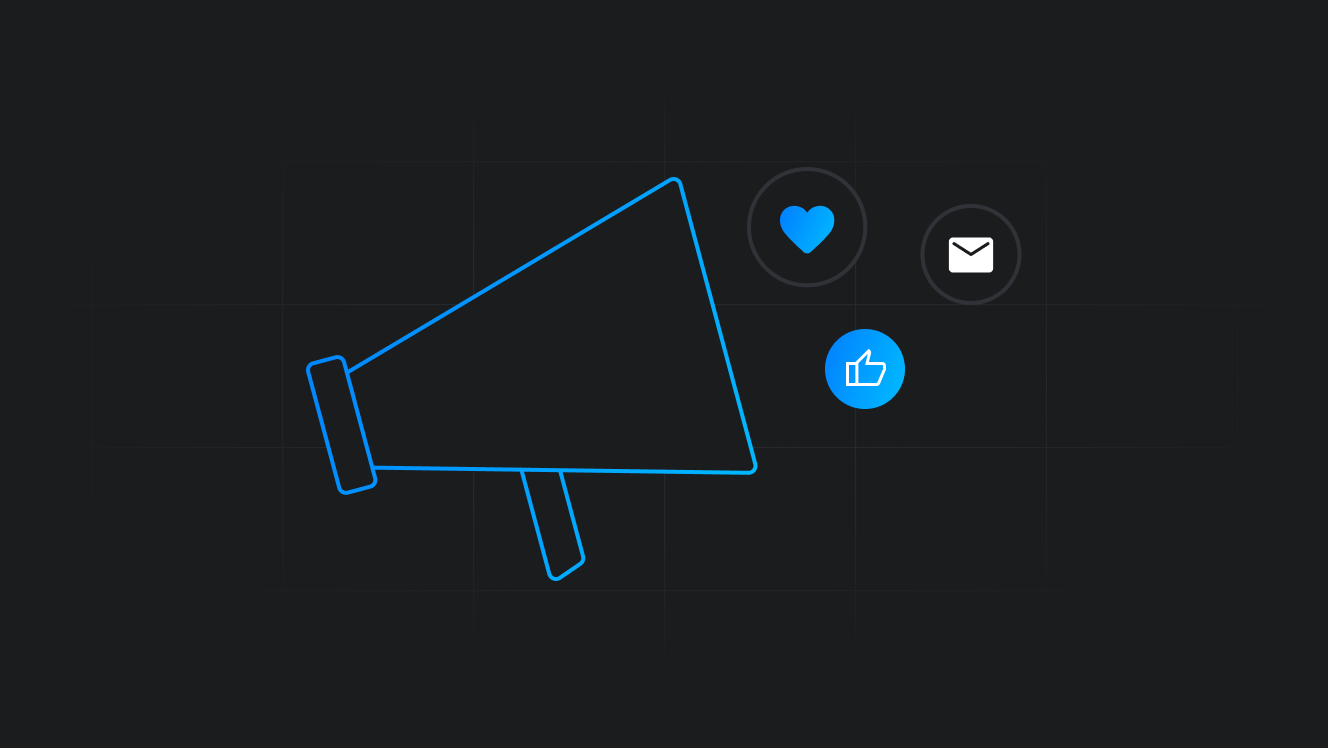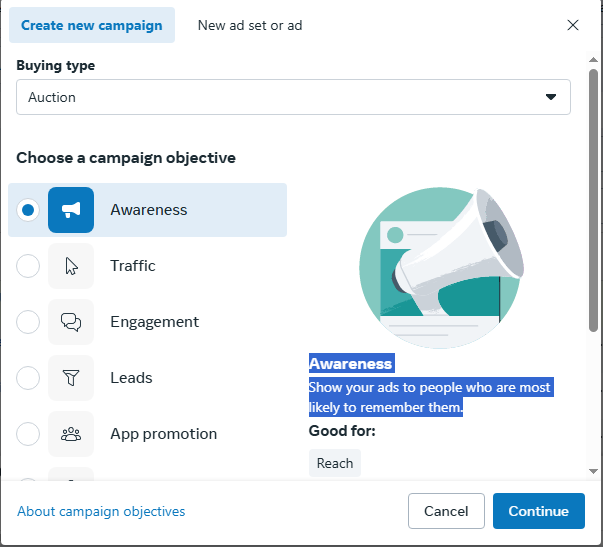7 Tips to Run a Brand Awareness Campaign on Facebook
Facebook brand awareness campaigns fail when treated as standalone ads, but they're useful for filling your retargeting pipeline. This guide reveals expert strategies for targeting the right audiences and avoiding the budget-draining mistakes that kill most awareness campaigns before they deliver results.



Brand awareness campaigns on Facebook don’t usually lead to instant sales, which is why many businesses write them off too quickly.
However, most customers need to see your brand more than once before they’re ready to buy.
Awareness ads can help you build that familiarity with the right people and set the stage for conversions later.
When done wrong, these ads can be budget drainers, but if strategic, they’re one of the smartest ways to lower long-term acquisition costs.
In this article, we’ll analyze when brand awareness campaigns make sense, how experts run them, and the mistakes to avoid.
Key takeaways
- Brand awareness campaigns work best as the first step in a funnel, not as standalone ads for immediate sales.
- Video ads consistently outperform static images because they let you retarget viewers based on how much they watched.
- Setting frequency caps at 3-4 impressions per week prevents ad fatigue that can hurt your brand perception.
- Lookalike audiences generated from high-value customers can cut your cost-per-qualified-prospect by 60% compared to broad targeting.
What is a brand awareness campaign on Facebook?
Brand awareness campaigns help people recognize and remember your business, even if they aren’t ready to buy yet.
Meta explains that these ads support businesses in expanding their reach and staying top of mind with customers.
They are primarily useful when you want to:
- Strengthen brand recognition
- Influence how people see your business
- Or create an audience you can retarget later with conversion campaigns.
The last one is our favorite (and recommended) use of brand awareness campaigns. That way, when you eventually launch conversion campaigns, your audience already has a sense of familiarity and trust.
Is a Facebook brand awareness campaign worth it?
Yes, but only when it is part of a bigger strategy.
In fact, Meta reports that 74% of people use its platforms to discover new brands or products online.
Facebook is, therefore, an ideal place to introduce your business and stay visible while potential customers move through their decision-making process.
On its own, a brand awareness campaign rarely moves the needle because the goal is attention, not sales.
The biggest value of this campaign type comes when you treat awareness as the first step in a funnel that eventually leads people toward conversion.
Awareness ads make the most sense in industries where customers need multiple touchpoints before they feel ready to buy.
Seth Gillen, owner of Sierra Exclusive Marketing, identifies two scenarios where these campaigns perform well:
When you're in a service-based industry where people need multiple touchpoints before buying (like our real estate clients or financial services). Second, when you're competing against established players and need to build credibility fast.
How to run a brand awareness campaign on Facebook
Like any other Facebook campaign, you’ll start by heading over to adsmanager.facebook.com, then clicking the bright green button labeled Create.
From there, choose Brand Awareness as your campaign objective. Finally, proceed with setting your Facebook ad budget, defining your audience, and choosing your ad placements.
At this point, your audience strategy matters more than anything else. Experts say the most important setup element is how you layer your audience, as you’ll see in the sections that follow.
Follow this Meta Ads Manager guide to see how you can complete the setup of awareness campaigns on Facebook.
7 tips for running the best Facebook brand awareness campaigns
Because brand awareness ads have a high risk of resulting in wasted ad spend, we recommend following these #7 tips when setting them up.
1. Run brand awareness as part of a funnel
A brand awareness campaign should never stand alone.
The whole point of awareness is to introduce people to your brand. However, without a follow-up strategy, you are risking budget waste on people who will most likely never interact with your brand again without prompting.
Dwight Zahringer, Founder of SJD Taxi Airport Shuttle, recommends setting up a retargeting pixel when running brand awareness campaigns.
I always run brand awareness as the top of a two-campaign funnel - awareness first, then retargeting for conversions.

Founder of SJD Taxi Airport Shuttle
Awareness should not be the end goal.
When someone engages with your ad or visits your site, you need to guide them into the next step.
That might look like sending them a conversion ad, retargeting them with offers, or nurturing them via an email sequence.
Magee Clegg, CEO of Cleartail Marketing, stresses that you should build this follow-up into the system from the start.
The biggest mistake I see is treating brand awareness as a standalone campaign instead of the top of your funnel. Most businesses run awareness ads then wonder why people don’t immediately buy. We always pair awareness campaigns with retargeting sequences. When someone engages with the awareness ad, they automatically enter our email nurturing system that’s designed to convert over 30–60 days.
2. Don’t go too broad with your audience
More eyes on your ad sounds like a win, but in reality, choosing a broad audience usually leads to wasted spend and unqualified leads.
The better approach is to narrow in on people who already resemble your best customers.
Lookalike audiences are one of the best ways to do this.
Facebook allows you to upload data such as website visitors, customer emails, or purchase records, and then finds people with similar traits to advertise to.
Clegg has seen this strategy cut their costs dramatically. “We pulled our client's email list of customers who spent $50K+ annually and created lookalike audiences from that data. This approach delivered qualified prospects at 60% lower cost than industry targeting.”
In this case, using a high-value customer list gave Facebook better signals about who to target, which kept traffic quality high and the budget waste low.
Another option for getting a better targeting audience is hyper-local targeting. It’s one of the best options for physical or service-based businesses.
Kerry Anderson, Co-Founder, RankingCo, uses this approach with their clients.
The make-or-break element [for Facebook brand awareness campaigns] is audience precision, not creative. Most businesses cast too wide a net, thinking more reach equals better results. I always start with a 5-mile radius around the business location and layer in specific behaviors like ‘engaged with competitor pages’ or ‘searched for our services recently.’ This hyper-local targeting typically cuts cost-per-impression by 60% while doubling engagement rates.

Co-Founder, RankingCo
Narrowing the location and layering in intent-based behaviors ensures you end up reaching fewer people overall, but the right people see your ads, and that’s what ends in a sale.
3. Exclude your existing website visitors
One mistake many advertisers make with awareness ads is paying to show awareness ads to people who already know the brand.
If someone has been on your site recently or engaged with your social media, they are no longer a ‘cold’ audience.
At that point, they should be in a retargeting sequence, not an awareness campaign. Otherwise, you’ll be wasting your Facebook ad budget on people who don’t need that early introduction again.
Milton Brown, Owner of Multi Touch Marketing, sees this mistake play out quite often.
Always exclude your existing website visitors from the past 180 days and people who've already engaged with your business on social media. One e-commerce client was wasting 60% of their budget targeting people who already knew about them instead of true cold prospects.

Owner of Multi Touch Marketing
Excluding these groups ensures your awareness campaigns reach the people they are meant for: fresh audiences who have never encountered your brand before.
4. Use video over static images for higher engagement
If you want your awareness ads to perform well, use video ads.
A static ad might grab attention for a second, but video gives you time to tell a story, show personality, and start building familiarity.
One of the biggest advantages of video is how it feeds your retargeting.
With video, you can build custom audiences based on how long someone watched your video.
If a viewer makes it through 25 percent, 50 percent, or even 75 percent of your video, you already know they are more interested than someone who scrolled past.
That gives you a warm audience to retarget with conversion ads. Another smart play is to use video ads that encourage likes, follows, or shares, which you can then turn into retargeting segments.
Anderson has seen how effective this sequence can be. “We use custom audiences to capture everyone who watched 25% of our awareness videos, then hit them with specific service offers within 7 days. This sequence approach has consistently delivered 3x better ROI than running awareness campaigns in isolation.”
Meta’s own data shows that video works much better at such campaigns.
According to the company, adding video increased the likelihood of buying a product 79 percent of the time, with purchase intent rising by 12 percent overall and by 26 percent among new buyers.
However, not every video will work for awareness.
An excellent approach is to treat these videos as filters.
In the first three seconds, show who your product is for and who it isn’t. Call out your ideal customer right away, then use the next few seconds to show a benefit or share something interesting that keeps the right people watching.
As for length, one to five minutes works well, with about ninety seconds often being the sweet spot.
5. Track how your audience behaves
Reach and impressions will tell you how many people saw your ad, but they don’t show whether those views are worth it. That’s why so many businesses struggle to prove the value of awareness campaigns.
The fix is using the Facebook Pixel. With Pixel events, you can see how people who came from your awareness ads behave differently from cold traffic.
Do they spend more time on your site? Do they look at more pages? That data tells you whether your ads are building interest or just burning through budget.
Gillen explains that, “Most businesses can’t connect brand awareness spend to actual revenue. I always set up Facebook Pixel events to track how awareness viewers behave differently, like time spent on websites or pages visited. For Sierra Exclusive, our awareness campaign viewers spend 40% longer on our site and visit 2.3x more service pages than cold traffic.”
6. Refresh your creatives regularly
No matter how strong your ad is, it won’t perform well forever.
People eventually tune out when they see the same advertisement too often, and Facebook will charge you more for weaker results.
The earliest warning signs are creeping CPMs and declining reach, even though your spend hasn’t changed. If you see that, it’s time to stir things up and refresh your creatives.
According to Zahringer, “If your CPM jumps above $15–$20 or your reach starts declining while spending stays the same, your creative is getting stale and needs refreshing.”
7. Set frequency caps to avoid ad fatigue
Awareness works best when people see your brand a few (relevant) times, not when they feel chased around the internet.
Without frequency caps in place, Facebook can push the same ad to your audience over and over until they’re more annoyed than interested.
Gillen has seen this play out firsthand.
“The single most important thing is your frequency cap. Set it to 3–4 impressions per person per week, maximum. I've seen businesses burn through $5K+ monthly budgets, showing the same ad 15+ times to the same people, which actually hurts brand perception. We had a local bakery waste $2,400 in three weeks because Meta kept hammering their small town audience until people started leaving negative comments about seeing the ads too much.”
FAQs
It’s a type of ad campaign designed to help people recognize and remember your business, even if they’re not ready to buy yet. The goal of brand awareness campaigns is to help you stay visible, build familiarity, and create an audience you can later retarget with conversion ads.
In Ads Manager, choose the Brand Awareness objective. From there, think less about reaching the biggest crowd and more about reaching the right people. Video ads are a good choice because they give you the option to retarget viewers based on how much of the video they watched. Once people have seen you for the first time, follow up with retargeting campaigns that keep your business in front of them until they’re ready to buy.
Yes, but only when they’re part of a bigger strategy. They won’t bring instant sales, but they prepare the ground by making your brand familiar so that when you do run conversion campaigns, people are more likely to respond.
Final thoughts
Most businesses waste money on Facebook brand awareness campaigns because they treat them like magic bullets.
Awareness ads don't generate instant sales, and don’t expect them to. They are better for filling up your retargeting pipeline with qualified leads.
To make them work, target lookalike audiences, exclude existing visitors, use video content, and refresh creatives every 10 days.
The challenge with this strategy is that you need fresh creatives on rotation. If you have a large catalog, it won't be possible to sustain this every few weeks.
We recommend working with Cropink, a creative automation tool that helps you generate hundreds of aesthetic, conversion-ready catalog ads automatically. To learn more, visit cropink.com.
Sources
- Meta. Brand awareness

Damaris is a Digital Marketing Specialist who writes about digital marketing and performance marketing. At Cropink, she creates data-driven content to help businesses run better ad campaigns for better performance and ROI.

Leszek is the Digital Growth Manager at Feedink & Cropink, specializing in organic growth for eCommerce and SaaS companies. His background includes roles at Poland's largest accommodation portal and FT1000 companies, with his work featured in Forbes, Inc., Business Insider, Fast Company, Entrepreneur, BBC, and TechRepublic.
Related Articles
A lot of Facebook ad templates look polished, but can’t keep up when you need to create ads at scale. They don't connect to product feeds, support dynamic content, or handle the constant updates ecommerce brands need. Get 5 free templates that work with your catalog data and adapt automatically as your inventory changes.

Cyber Monday has changed from a desktop-first sales day to a mobile-first extension of Black Friday weekend. We’ll show you how to adjust your Meta Catalog Ads strategy for Cyber Monday shoppers who are more deliberate, comparison-focused, and ready to buy online.

Black Friday is the most competitive shopping event of the year, and your ad creatives will determine how much you sell. Find out how to create Meta Catalog Ads that attract shoppers and encourage them to convert without hesitation.

Learn the Meta ads targeting options that truly work in 2026. Broad targeting paired with first-party signals cuts CPA by 32%. 65% of advertisers now scale profitably using Advantage+ campaigns. Includes playbooks, pitfalls, and setup checklists.

Meta Pixel may seem technical, but it’s simpler than it looks. We explain what the Meta Pixel code is, how to install it, and how to troubleshoot common errors. You’ll also see a meta pixel code example and learn how to use Pixel data for retargeting, audience building, and measuring ad performance.

Facebook has 3.06B users, ranks as the 3rd most-visited site in 2026, and drove $164.5B in ad revenue last year. Learn how to master its 19 ad placements—from high-engagement Reels to low-CPC right column ads—for maximum ROI.

With 3 billion+ users and detailed targeting, Facebook is still a powerful B2B channel. This guide breaks down winning ad formats, funnel tactics, and real-world results, including a 492% CTR lift, and why Facebook may outperform LinkedIn for many B2B brands.

Facebook reaches 2.91B users worldwide—learn how Instant Forms, Automated Chat, and smart targeting help you capture quality leads and cut costs without leaving the platform.

Meta Business Manager can certainly be overwhelming at first, but it doesn’t have to stay that way. This 4-step guide shows you how to set it up, add your assets, and keep everything secure so you can manage Facebook and Instagram marketing with ease.

Discover 11 tested ways to customize your Facebook Dynamic Product Ads for better performance. Learn how you can create DPAs that draw attention and increase conversions effortlessly.

Learning the difference between internal labels and custom labels can drastically change how your Meta catalog campaigns perform. This guide covers what makes them different and which one you should be using.

Learn how to manually add Site Links in Facebook (Meta) Ads, enable them in Advantage+ Creative, and track performance using URL parameters, Custom Conversions, and GA4.

How Can Cropink Help?
Start with Cropink is easy and free
No credit card required


